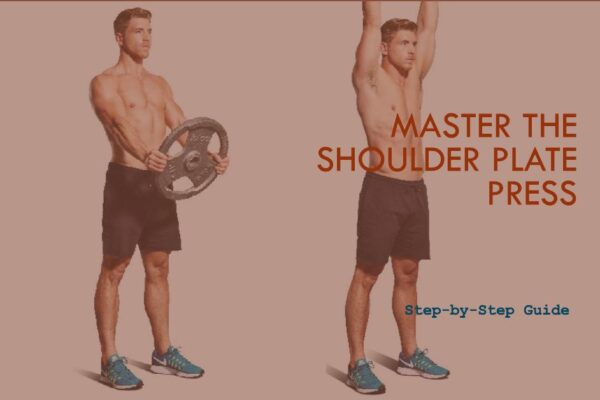Having strong and stable forearms is crucial for maximizing overall arm strength and improving performance in various exercises. One effective exercise that specifically targets the forearm muscles is the Seated Palm-Up Wrist Curl.
What is Seated Palm-Up Wrist Curl
Palm-Up Wrist Curl is a targeted exercise that primarily focuses on the forearm muscles. By performing this exercise correctly and consistently, you can develop stronger forearms, improve grip strength, and enhance overall arm aesthetics.
Forearm wrist curls involve holding a barbell with an underhand grip and curling the weight upward using the forearm muscles.
Importance of Forearm Strength in Fitness and Everyday Activities
The forearms play a vital role in a variety of exercises, including lifting weights, pulling movements, and maintaining a secure grip during physical activities.
Strengthening your forearms not only enhances your performance in these exercises but also helps prevent injuries.
Muscles Targeted By Wrist Curls:
To understand the effectiveness of Seated Palm-Up Wrist Curl, it’s crucial to identify the primary and secondary muscles engaged during this exercise. Let’s explore these muscle groups:
Muscle Groups Targeted
- The seated palm-up wrist curl targets the forearm flexors, particularly the brachialis, brachioradialis, and flexor carpi radialis.
- It emphasizes wrist extension and promotes balanced forearm development.
How to Perform Seated Wrist Curl
A. Step-by-step instructions
- Start by sitting on a flat bench or chair with your feet flat on the floor and your back straight.
- Hold a dumbbell or barbell with an underhand grip (palms facing up) using a shoulder-width grip. Choose an appropriate weight that challenges you but allows for proper form.
- Rest your forearms on your thighs, allowing your wrists to hang off your knees, palms facing up.
- Keep your upper arms stationary throughout the exercise. This will ensure that the movement comes from the wrists only.
- Slowly lower the weight by allowing your wrists to curl down, keeping your forearms and elbows in contact with your thighs.
- Once your wrists are fully extended, pause for a brief moment to feel the stretch in your forearms.
- Begin the upward phase of the exercise by flexing your wrists, curling the weight upward as far as possible.
- Squeeze your forearms at the top of the movement and hold for a second to maximize the contraction.
- Repeat the movement for the desired number of repetitions.
- Remember to breathe steadily and maintain proper form throughout the exercise.
B. Explaining the correct grip and hand positioning
To optimize the effectiveness of wrist curls, it’s essential to have the correct grip and hand positioning:
- Grip: Hold the barbell with an underhand grip, ensuring your palms face upward and your hands are shoulder-width apart.
- Hand Positioning: Position your hands slightly wider than shoulder-width, allowing for a comfortable grip and minimizing strain on the wrists.
Benefits of Seated Wrist Curls
Incorporating palm-up curls into your workout routine offers several benefits:
- Improved Grip Strength: Wrist curls help strengthen your grip, making it more powerful and beneficial for activities like weightlifting and sports that require a strong hold.
- Enhanced Wrist Stability: By strengthening the muscles responsible for wrist flexion and extension, palm-up curls improve wrist stability, reducing the risk of injuries during upper body exercises.
- Increased Forearm Muscle Definition: Regularly performing seated curls promotes muscle growth and definition in the forearm flexors and extensors, resulting in more sculpted forearms.
- Support for Upper Body Lifts and Exercises: Strong forearms provide a stable foundation for performing upper body lifts and exercises, allowing you to lift heavier weights and perform challenging movements more effectively.
Variations of Seated Palm-Up Wrist Curls
While the traditional barbell forearm curl is highly effective, incorporating variations of the exercise can add variety to your training routine and target specific aspects of forearm development. Let’s explore some notable variations:
EZ bar Palm-Up Wrist Curl
The barbell palm-up wrist curl is a variation that specifically targets the forearm flexors. It places additional emphasis on wrist flexion and helps develop forearm strength from a different angle. Here’s how to perform it:
- Technique and Execution:
- Start by sitting on a flat bench with your feet flat on the floor and your back straight.
- Grasp an EZ bar with an underhand grip (palms facing up), using a shoulder-width grip. Choose an appropriate weight that challenges you but allows for proper form.
- Rest your forearms on your thighs, allowing your wrists to hang off your knees, palms facing up.
- Keep your upper arms stationary throughout the exercise. This will ensure that the movement comes from the wrists only.
- Slowly lower the weight by allowing your wrists to curl down, keeping your forearms and elbows in contact with your thighs.
- Once your wrists are fully extended, pause for a brief moment to feel the stretch in your forearms.
- Begin the upward phase of the exercise by flexing your wrists, curling the weight upward as far as possible.
- Squeeze your forearms at the top of the movement and hold for a second to maximize the contraction.
- Repeat the movement for the desired number of repetitions.
- Remember to breathe steadily and maintain proper form throughout the exercise.
- Benefits and Targeted Muscles:
- The barbell palm-up wrist curl primarily targets the forearm flexors, including the brachialis, brachioradialis, and flexor carpi radialis.
- It enhances wrist flexion strength and promotes balanced forearm development.
Seated Forearm Curl
The seated forearm curl variation provides stability and isolates the forearms by eliminating the involvement of the upper body. This variation is particularly beneficial for individuals looking to isolate the forearm muscles and focus on strength development. Follow these steps:
- Proper Form and Execution:
- Sit on a bench or chair with your feet planted firmly on the ground.
- Hold a barbell with an underhand grip, allowing your arms to hang naturally in front of your body.
- Keep your upper arms stationary against your sides throughout the exercise.
- Begin the movement by flexing your wrists, curling the weight upward towards your shoulders.
- Contract your forearm muscles at the top of the movement, then slowly lower the weight back down with control.
- Repeat for the desired number of repetitions, focusing on maintaining proper form and control.
- Advantages and Muscle Activation:
- The seated forearm curl isolates the forearm muscles by minimizing the involvement of the upper body.
- This variation allows for greater focus and control during the exercise, promoting specific forearm strength development.
Common Mistakes to Avoid
To ensure optimal results and minimize the risk of injuries, it’s important to avoid these common mistakes when performing seated palm-up curls:
A. Using Excessive Momentum
Avoid swinging the weight or using momentum to lift the barbell. Focus on controlled movements and engaging the forearm muscles throughout the exercise.
B. Neglecting Proper Form
Maintain proper form and alignment, keeping your elbows close to your sides and avoiding excessive wrist flexion or extension.
C. Overloading with Excessive Weight
Start with a weight that allows you to perform the exercise with proper form and technique. Gradually increase the weight as your strength improves.
D. Neglecting Full Range of Motion
Perform the exercise through a full range of motion, ensuring that you fully flex and extend your wrists during each repetition.
E. Holding the Breath
Remember to breathe naturally throughout the exercise. Holding your breath can increase intra-abdominal pressure and compromise your form.
By addressing these common mistakes, individuals can minimize the risk of injuries and optimize the effectiveness of their wrist curls.
Best Practices for Effective Palm-Up Wrist Curl
To maximize the effectiveness of barbell curls and ensure optimal results, it’s important to follow these best practices:
Warm-up and Stretching
Prior to starting barbell seated curls, warm up your muscles with a short cardio activity and perform dynamic stretches targeting the forearms and wrists.
Appropriate Equipment Selection
Choose a comfortable barbell that allows for a secure grip and is suitable for your current strength level
Recommended Repetition and Set Ranges
Aim for 8-12 repetitions per set and perform 3-4 sets of wrist curls to promote forearm strength and muscle growth
Rest and Recovery Periods
Take 1-2 minutes of rest between sets to allow your muscles to recover and prepare for the next set. This helps maximize the benefits of your workout.
Tips to Maximize Your Results
In addition to following the proper technique and avoiding common mistakes, here are some additional tips to maximize the results of your barbell forearm curl training:
Progressive Overload
Continually challenge your forearms by gradually increasing the weight or resistance over time. This progressive overload stimulates muscle growth and strength development.
Incorporate Variation
Periodically incorporate variations of palm-up curls to target the muscles from different angles and promote balanced development
Consistency and Frequency
Perform seated curls consistently and include them in your workout routine at least 1-2 times per week to optimize results
Proper Nutrition and Recovery
Take 1-2 minutes of rest between sets to allow your muscles to recover and prepare for the next set. This helps maximize the benefits of your workout.
By following these tips, you can optimize your results and maintain a safe workout routine.
Frequent Question Answers
By addressing the following frequently asked questions, we hope to provide clarity and guidance on incorporating the seated palm-up curls into your fitness routine. Remember to listen to your body, start at an appropriate level, and gradually progress for optimal results.
| FAQ | Answer |
|---|---|
| What muscles do seated palm-up wrist curls target? | Seated palm-up wrist curls primarily target the muscles in the forearms. |
| How should I position my wrists during the exercise? | Position the back of your wrists on top of your knees and start from that position. |
| What is the recommended rep range for this exercise? | It is usually recommended to perform seated palm-up wrist curls for high reps, such as 10-15 reps per set or more. |
| Can beginners do seated palm-up wrist curls? | Yes, beginners can definitely perform seated palm-up wrist curls as it is a simple exercise targeting the forearms. |
| Are there any variations of seated palm-up wrist curls? | Yes, variations include using dumbbells instead of a barbell and performing low-pulley wrist curls. |
Conclusion
n conclusion, seated palm-up wrist curls are a fantastic exercise for targeting and strengthening the muscles in your forearms.
By positioning the back of your wrists on top of your knees and performing the exercise with proper form, you can effectively work the flexor muscles of your forearm.
This exercise is suitable for individuals of all fitness levels, including beginners, as it is easy to learn and execute.
To further enhance your forearm workouts, you can incorporate variations such as using dumbbells instead of a barbell or trying out low-pulley wrist curls. These variations provide additional challenges and help to prevent plateaus in your training routine.
Regularly including seated palm-up wrist curls in your workout routine will not only improve your forearm strength and stability but also contribute to better grip strength and overall upper body performance.
So, grab a barbell or dumbbells and start incorporating seated palm-up wrist curls into your workouts to see the impressive benefits for yourself. Strong and powerful forearms await you!






Leave a Reply